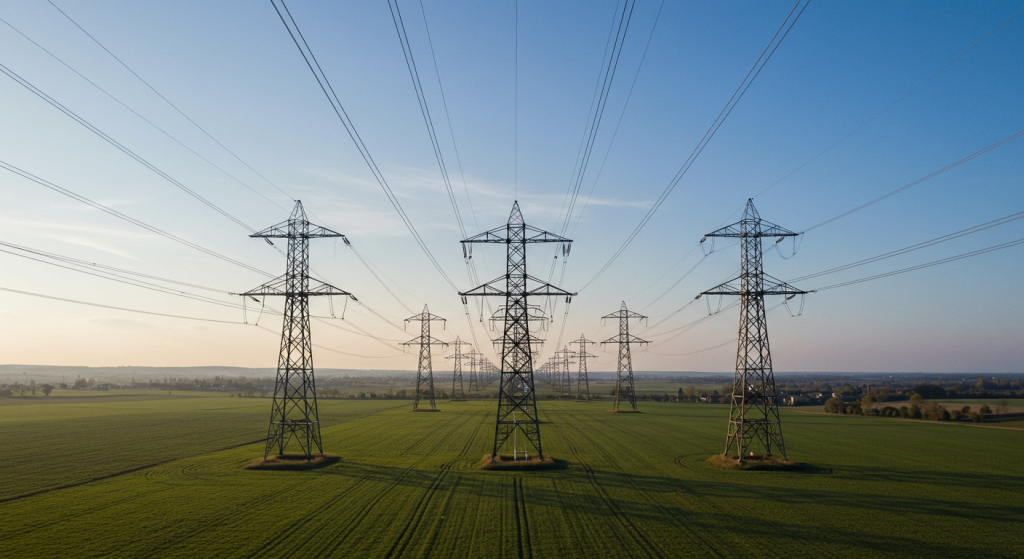Electricity Transmission Towers: Powering Our Modern World
2025-04-17
What are Electricity Transmission Towers?
Electricity transmission towers or electricity pylons are scraped constructions made out of steel or concrete and are geographically placed for local, national, or international voltage level power transmission. Every tower is fitted with an intricate system that serves the purpose of preventing electric faults while facilitating power reliability to the pylons by conductors, insulators, and other components of power lines that offer firm support to the electricity towers. Because of the design and function, the types of electricity towers include, but are not limited to:
- Functional types such as Guyed Towers, pole supports with cables that can withstand powerful winds, and Monopole Towers, single cylindrical towers situated in urban areas.
- The supports placed in shaping and guiding units of the winds at the pole foundation into the supporting cables enable these guyed towers to sustain high wind forces.
The Criteria of Constructions Contain:
• Suspension Towers:
positioned in areas that are free of twisted transmission lines to allow easy support for straight pass transmission.
• Lattice Towers:
These frameworks are very strong and complex steel structures.
Types of Transmission Towers:
The delicate shapes of transmission towers are created to exert influence on the regions beyond the electric network. And simultaneously improve the infrastructure framework in urbanized places.
• Tension Towers (Dead-end, angle towers):
They perform a function of controlling the hoisted mechanical Stress and the changes of direction.
• Transposition Towers:
This electromagnetic interference, or distortion, caused by the energy lines of a tower, is controlled by changing the position of the conductors.
• Strain Towers:
These are used to maintain or stabilize long, smooth power lines.

Criteria for Selecting an Electricity Transmission Tower
When selecting electricity transmission towers, a great deal of attention must be paid to their specifications because they are critical for the operation of transmitting power within a given geographical area. It is essential that these, relatively, ensure maximum reliability, durability, and cost-effectiveness. When selecting electricity towers, the following components are of importance:
1. Voltage Level and Load Capacity
All ranges of voltage come with their assigned types of towers, ranging from 69kV to 765kV. Moreover, the selected tower must fulfill the criteria of electrical range (effort) and efficiency.
2. Durability and Quality of Material
Galvanized steel of high quality guarantees the required strength as well as corrosion resistance. The optimum materials for the towers will minimize maintenance costs due to severe weather-derived wear and tear, proven by weather elements.
3. Configuration & Design of Towers
The transmission design can employ monopoles, guyed towers, or lattice towers. All of these designs have corresponding advantages and disadvantages regarding ease of installation, stability, weight, etc.
4. Environment
Wind, seismic activities, along temperature change should not surpass the tower’s limits of endurance. Long performance hazards, along with humidity, can contribute to the already mentioned ice loads 5. Installation & Maintenance
Why Use X.Y. Tower Electricity Transmission Towers?
We have become a household name in regard to transmission power solutions and the electricity transmission infrastructure for good reason. The reasons cited below showcase why X.Y. Tower is the best.
1. Superior Durability & Strength
We provide line towers made from construction steel, which ensures outstanding strength while guaranteeing performance reliability over a considerable period. The construction is strong enough to make sure no structural failure occurs.
2. Weather & Corrosion Resistance
The galvanized coating on the tower makes it impervious to rust, severe temperatures, strong winds, and other environmental stresses, allowing it to withstand even the harshest conditions.
3. Easy Installation & Cost-Effectiveness
We emphasize quality while offering products that provide great value. The tower sections are prefabricated, simplifying the installation process, and the company’s low prices improve overall consumer satisfaction.
Engineering and Design Factors Relating to the Considerations of Tower Construction.
As stated previously, one of the towers has various engineering considerations. These include:
• Tower Height:
This parameter differs from one region to the other, owing to ground clearance as well as zoning voltage levels.
• Tower Base Width:
This will vary geometrically due to aesthetic considerations of the base. The strength of the tower as a whole will be negatively impacted by wind and seismic loads; however, these forces are more damaging to the structure itself.
• Crossarm Length:
This length aids in the zoning control of conductors and is referred to as crossarm length.
• Sag and Tension:
This is achieved in the line, so the transmission line operates smoothly.
• Material Selection:
The concrete and steel that compose the structure of the tower were selected because of their strength and durability.
Installation and Maintenance of Transmission Towers
Towers must be built in the following order:
- Site Selection:
Make sure that the construction of the towers does not have a severe impact on the natural environment.
- Foundation Construction:
Make certain that the tower can be built upright and will not fall over.
- Tower Assembly:
This includes bolting and bridging the various parts and components.
- Conductor Stringing:
Placing, locking, alignment, twisting, and installing the transmission cables.
- Quality Inspection:
Ensuring that the work abides by defined safety regulations.
Innovations Related to the Development Of Transmission Towers
The following novelties have improved the efficiency and the lifespan of transmission towers:
• HVDC Transmission (High Voltage Direct Current) – The Transfer of energy has the highest distance-related energy loss.
• Smart Grid Integration – All functionalities are controlled by automation and monitoring.
• Composite Insulators – Independence of loss related to significant changes.
• Hybrid Towers – Transmission towers whose cross sections are made of different materials, thus altering primary material strength.
Conclusion
Electricity transmission towers are undoubtedly the most crucial structure of the modern energy system. They fulfil the function of transporting electric power due to their capability of carrying high voltage transmission. Should you be seeking further information, do not hesitate to reach out to XY Tower speed regarding electric transmission towers and their features.

Привет, я Чуньцзянь Шу
"X.Y. Tower: Надежные, инновационные решения для высококачественных башен и электрооборудования с профессиональным сервисным обслуживанием.
